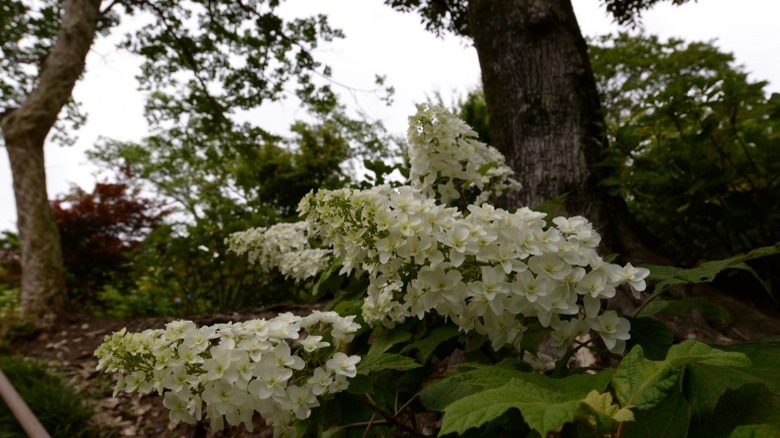Garden Trees, Shrubs & Vines
Rochelle Heath-Harris
If you’re interested in growing beautiful, flowering, vining plants then climbing hydrangeas are for you. You can also opt for false hydrangeas, which are nearly identical in care and appearance. The biggest difference is in the flower shapes and a pink variety that adds an unexpected yet delightful blush. Otherwise, it’s difficult to tell them apart, and they’re both absolutely gorgeous. Even Martha Stewart grows climbing hydrangeas up trees on her farm that look stunning.
If you have a trellis, arbor, pergola, gazebo, fence, or fence post, or perhaps a tree that’s been damaged or doesn’t look full and healthy, you might be looking for just the right vining plant to grow and train. Both climbing and false hydrangeas make terrific choices and usually won’t damage the tree. They grow lush and green and get thick with lacy white blooms every year.
False hydrangeas have flowers with petals that look like tiny sails on a sailboat, and can be white or pink (some other colors like blue and purple as well). Climbing hydrangeas have white lacy-looking blooms, but it’s difficult to tell them apart unless they’re not white. We’re going to talk about two of the most important things to grow these flowering vines: training them and pruning them. If this sounds intriguing, you’re in the right place.
How to train them to climb

Fiona Yanyi Tsang/Shutterstock
Hydrangea anomala (climbing hydrangea) and Schizophragma hydrangeoides (false hydrangea a.k.a. Japanese hydrangea) are both natural climbers, so training them to grow up whatever it is you have in mind should be relatively simple. If you purchase either of these varieties, keep in mind they don’t start blooming until fully mature, which can take anywhere from three to seven years. Therefore, purchasing a mature plant might be better in this case. Regardless, as soon as you plant it, put it adjacent to whatever you want it to climb, right from the start.
Make sure it will mostly get sun but with some afternoon shade. You can use soft twine, gardening tape, or cloth ties to help train it in the beginning, and you’ll be able to remove them later. Wrap the vines in a clockwise direction from the bottom upwards. Try to evenly distribute the points of support so that as it grows, its weight will be evenly supported by the trellis or structure. It’s important to regularly inspect your hydrangeas for any signs of pests or disease and to keep them climbing the way you want them to go. Redirect any stubborn strays with the twine or tape as needed.
Pruning your climbing hydrangeas
Sky.Sea.6983/Shutterstock
The other important care tip is regarding pruning your hydrangeas. To start, always remove deadheads when they’re finished blooming. After flowering and before new buds show up is when you want to do your pruning. Whenever you have dead branches/leaves or any damage throughout the year, remove the material right away. Climbing and false hydrangeas will thrive and bloom even if you don’t cut them back, but it’s easy to keep them nicely manicured with just a little effort.
Simply take very sharp shears and always cut shoots just underneath the spent blooms, where the smaller stem joins the larger one. Cut them back after flowering when all the blooms have died or wilted. If you want to remove dead or old vines to stimulate new, healthy growth, do so at the base of the plant. Although these climbers take a few years to establish and start blooming, once they do, you’ll never regret the choice to use hydrangeas.
